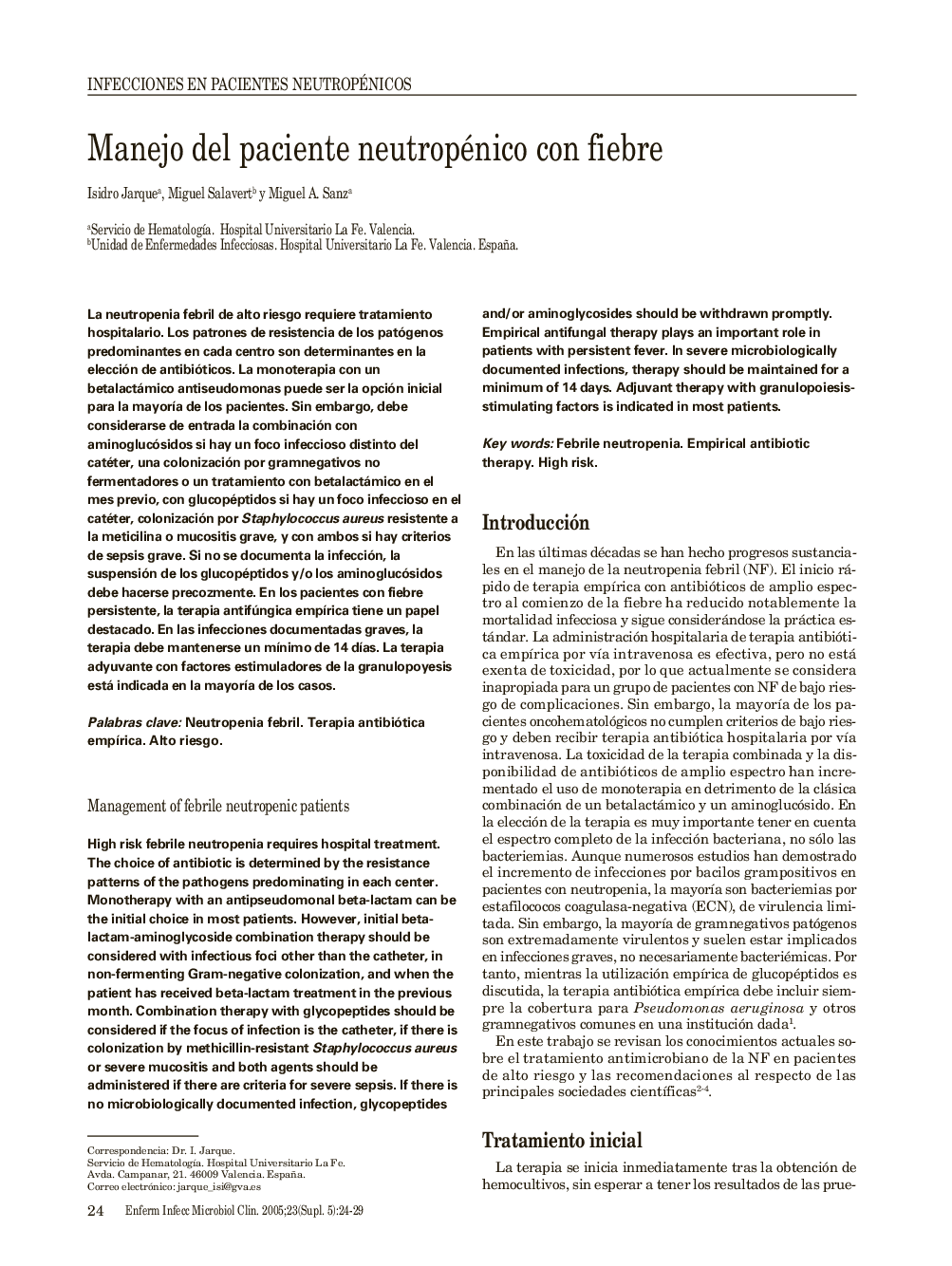| Article ID | Journal | Published Year | Pages | File Type |
|---|---|---|---|---|
| 9277355 | Enfermedades Infecciosas y Microbiología Clínica | 2005 | 6 Pages |
Abstract
High risk febrile neutropenia requires hospital treatment. The choice of antibiotic is determined by the resistance patterns of the pathogens predominating in each center. Monotherapy with an antipseudomonal beta-lactam can be the initial choice in most patients. However, initial betalactam-aminoglycoside combination therapy should be considered with infectious foci other than the catheter, in non-fermenting Gram-negative colonization, and when the patient has received beta-lactam treatment in the previous month. Combination therapy with glycopeptides should be considered if the focus of infection is the catheter, if there is colonization by methicillin-resistant Staphylococcus aureus or severe mucositis and both agents should be administered if there are criteria for severe sepsis. If there is no microbiologically documented infection, glycopeptides and/or aminoglycosides should be withdrawn promptly. Empirical antifungal therapy plays an important role in patients with persistent fever. In severe microbiologically documented infections, therapy should be maintained for a minimum of 14 days. Adjuvant therapy with granulopoiesis-stimulating factors is indicated in most patients.
Related Topics
Life Sciences
Immunology and Microbiology
Microbiology
Authors
Isidro Jarque, Miguel Salavert, Miguel A. Sanz,
